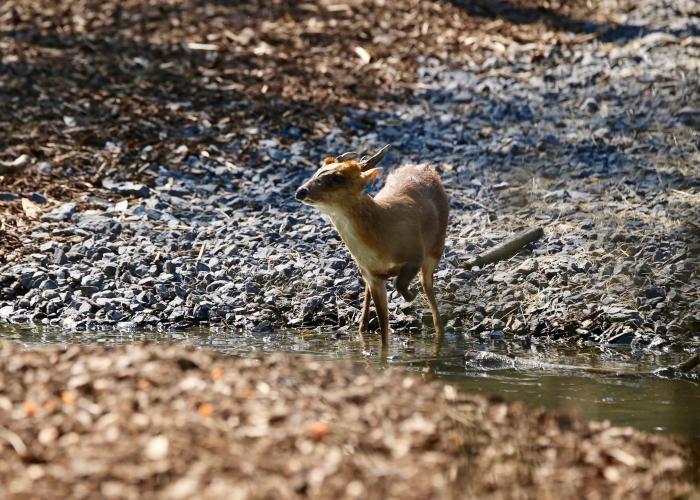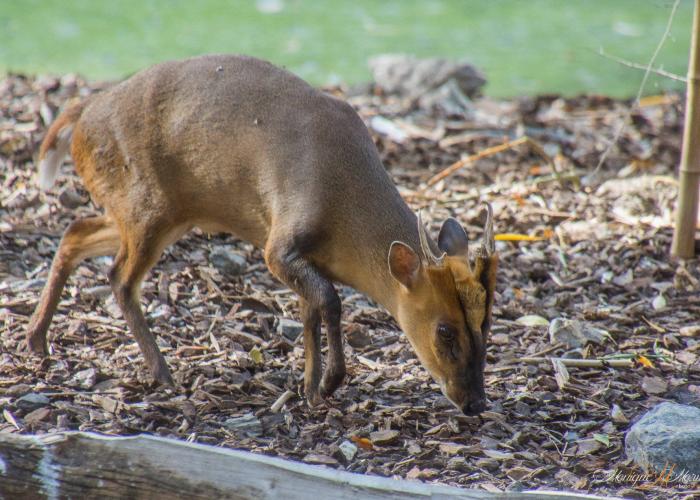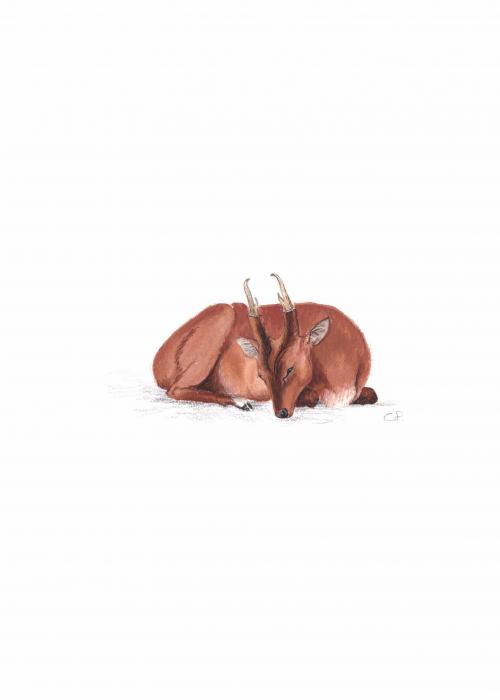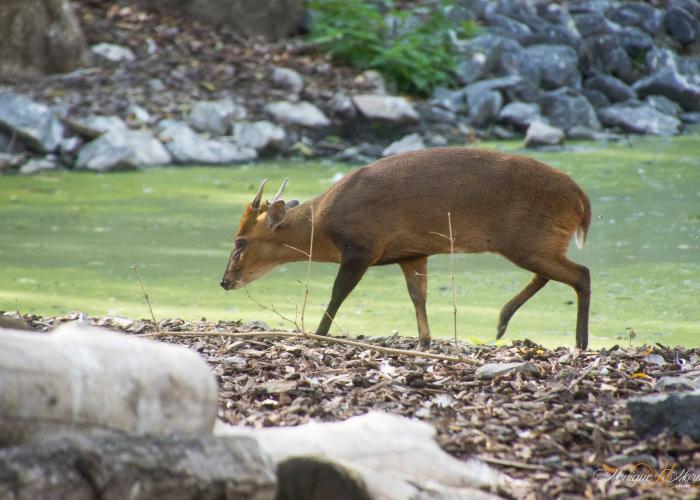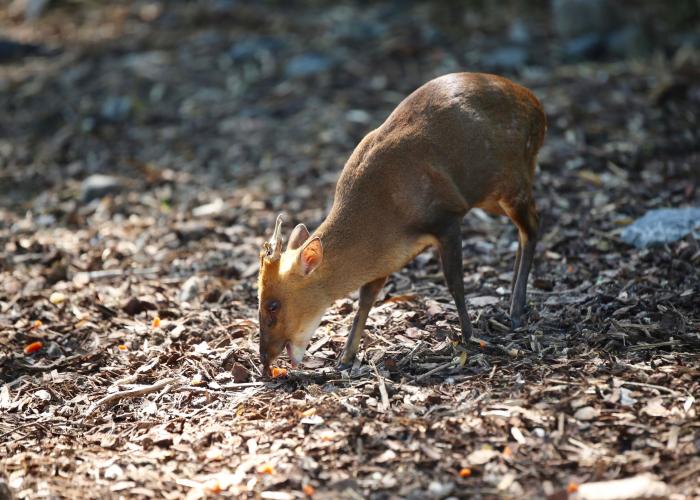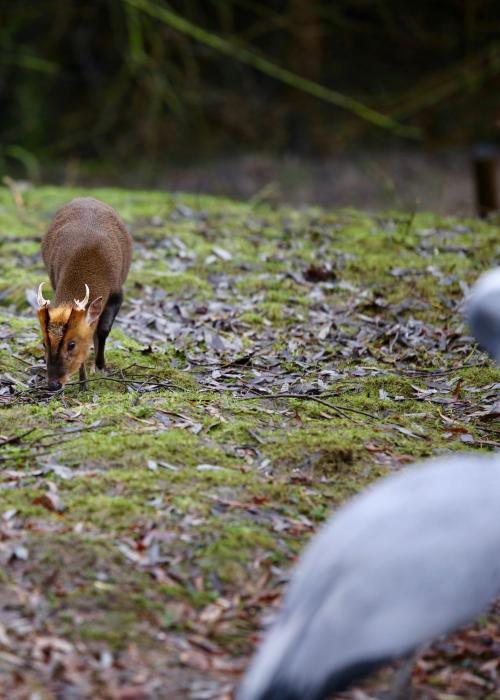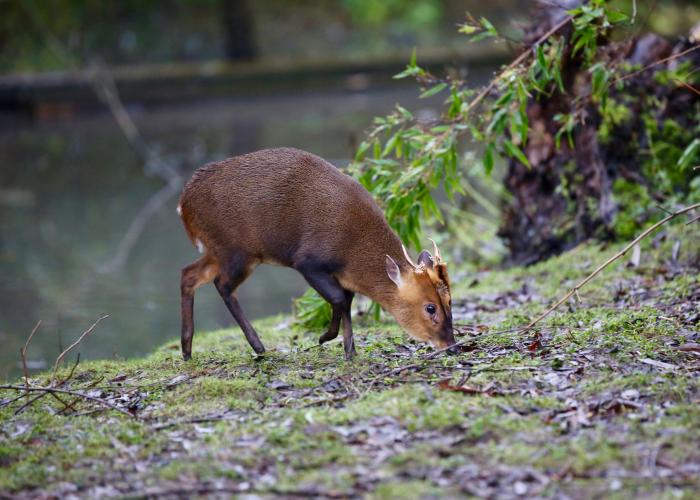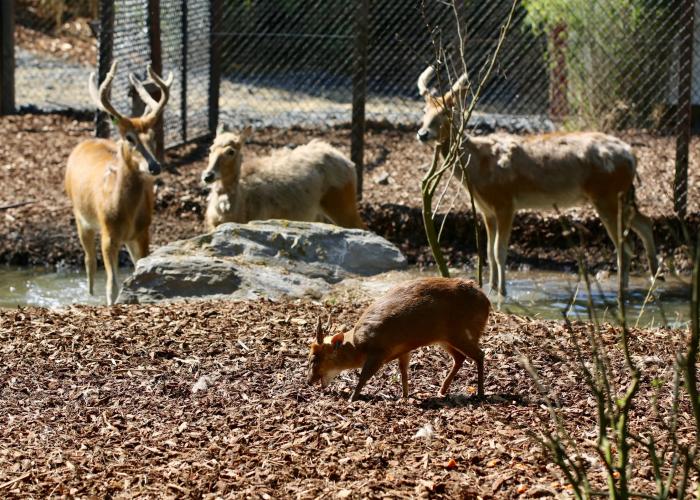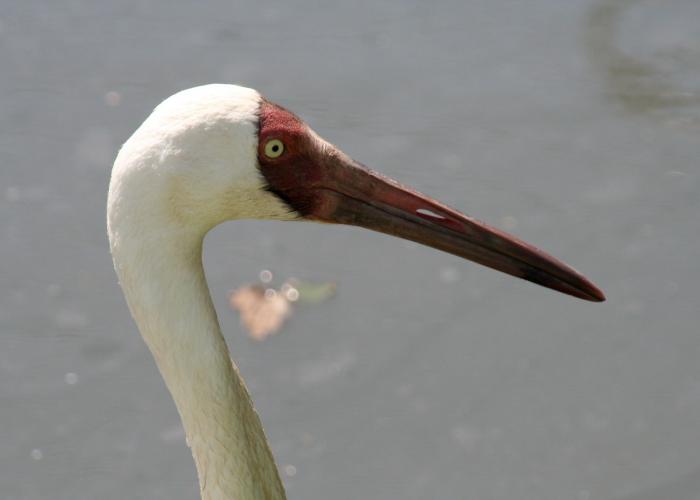Indian Muntjac
This animal has the simplest genome of all mammals.
This little Asian deer’s withers measure only a good fifty or so centimetre. It is also called the barking deer because of its impressive calls.
Living in the rainforests of the Indian sub-continent and Southeast Asia, up to an altitude of more than 6,000 feet on the slopes of the Himalayan foothills, the Indian Muntjac lives in small herds, marking its territory with secretions coming from a gland close to its eyes.
The male carries little antlers (about 15 cm long) and two well-developed upper canines that it uses – like tusks – during its territorial combats.
The Indian Muntjac is an herbivore but it also feeds on wild fruit and mushrooms. There are 15 different subspecies of muntjac, one of which has been introduced into England where it has proliferated to such an extent that scientists are now worried about the balance of the biodiversity.
The Indian Muntjac has the simplest genome of all mammals: only 6 pairs of chromosomes in the female, 7 in the male.
Indian Muntjac
This animal can be observed in the Chinese swamp.
A less threatened species
- Name : Indian Muntjac
- Latin name : Muntiacus muntjak
- Origin: India, Sri Lanka, China, Taiwan, Indonesia
- IUCN status : Least concerned
- Cites : --
